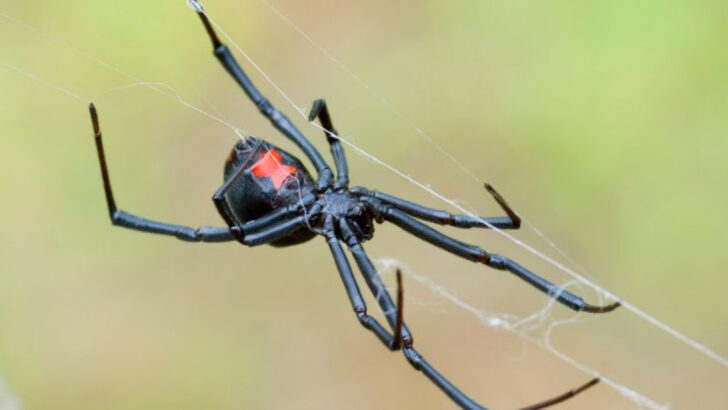The black widow spider, often synonymous with danger and mystique, captivates the world with its notorious reputation. While these arachnids are known for their venomous bite, there is much more to uncover about their intriguing existence. From their unique appearance to their fascinating behavior, black widows hold a special place in nature’s tapestry. Here, we explore ten riveting facts about these enigmatic spiders, shedding light on their true nature beyond the fearsome tales.
The Legendary Red Hourglass
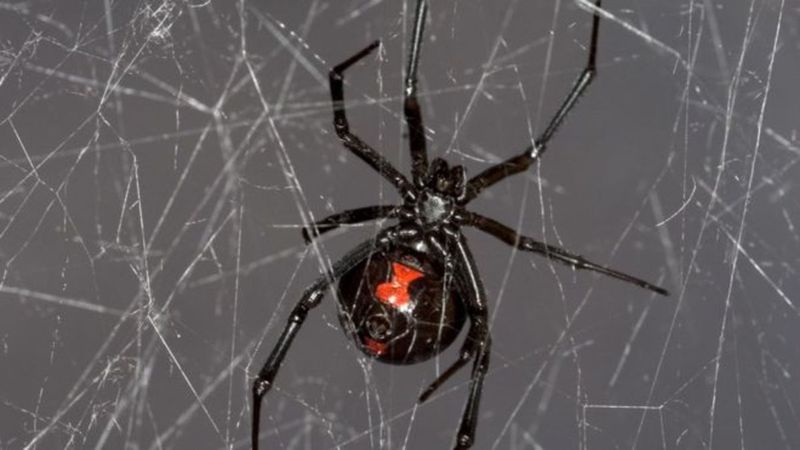
With its striking red hourglass mark, the black widow spider has become an icon of caution. This vivid symbol, found on the underside of the female’s abdomen, serves as a warning to potential predators.
Not all black widows carry this signature marking, but when present, it stands out starkly against their glossy black bodies.
The hourglass isn’t just for show; it plays a vital role in the spider’s survival strategy. By signaling danger, it helps deter attacks, allowing the black widow to thrive in its environment. Nature’s way of saying, “Beware!”
Venom’s Potency Unveiled
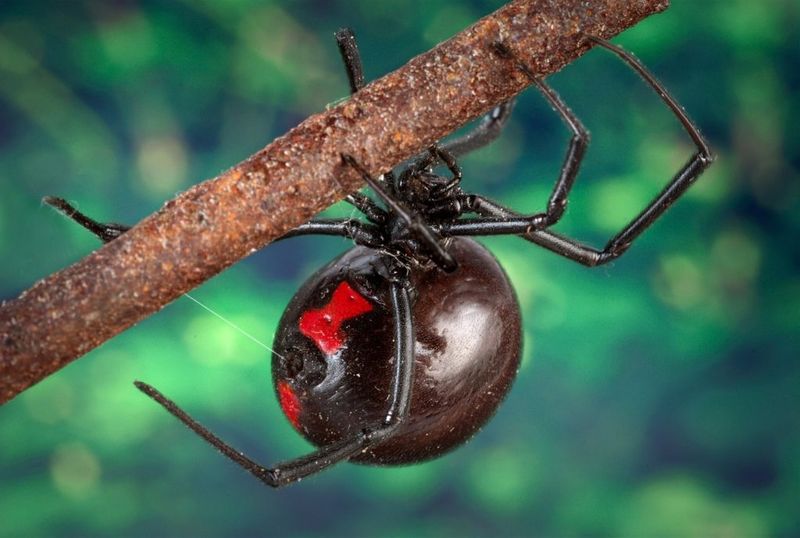
The black widow’s venom is infamous for its potency. Contrary to popular belief, bites are rarely fatal to humans, thanks to antivenom and medical advances. However, it’s among the most powerful venoms in the arachnid world.
Containing neurotoxins, it impacts the nervous system, causing pain and discomfort. The venom’s purpose is primarily to immobilize prey, ensuring the spider’s next meal doesn’t escape.
For humans, while bites demand respect, they aren’t the death sentence folklore suggests. Instead, they remind us of the delicate balance between nature’s beauty and danger.
Notorious Web Weavers
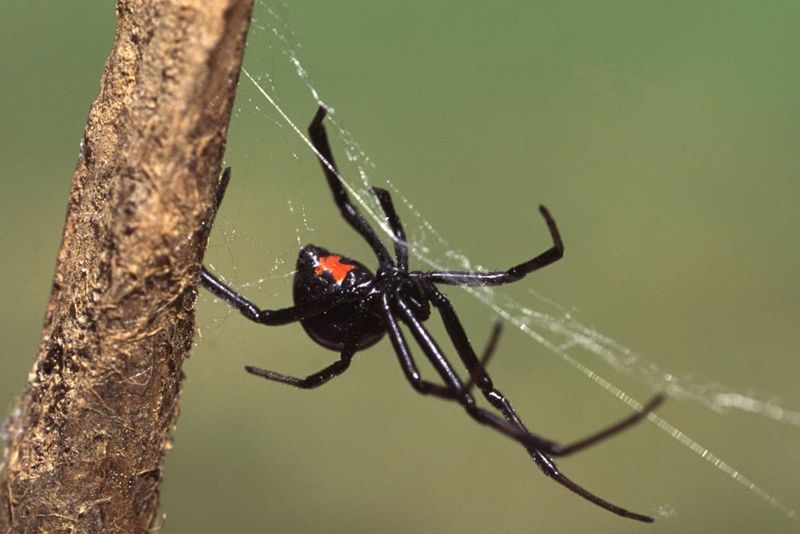
Black widows are master architects of the arachnid world. Their webs are irregular and sturdy, crafted with silk stronger than steel on a weight basis. These webs serve as both home and hunting grounds.
Unlike the symmetrical webs of orb-weavers, black widow webs appear chaotic, a testament to their unique lifestyle. They prefer dimly lit areas, where these tangled traps can be both discreet and effective.
Inside this silken fortress, the black widow waits patiently, showcasing its prowess as both a predator and engineer.
A Global Presence
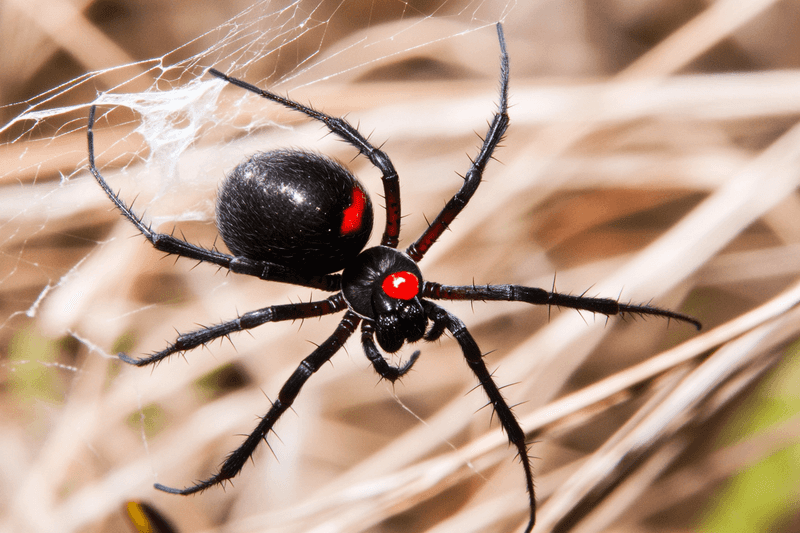
Black widow spiders are not confined to one corner of the globe. They thrive in diverse environments, from warm deserts to temperate forests. Their adaptability allows them to inhabit regions across North and South America, Europe, Asia, and Africa.
This widespread distribution underscores their survival capabilities. While their presence may cause unease, it also highlights a fascinating tale of resilience and adaptation.
Each region presents unique challenges, yet the black widow prevails, a true testament to nature’s ingenuity.
Gender Differences and Dynamics
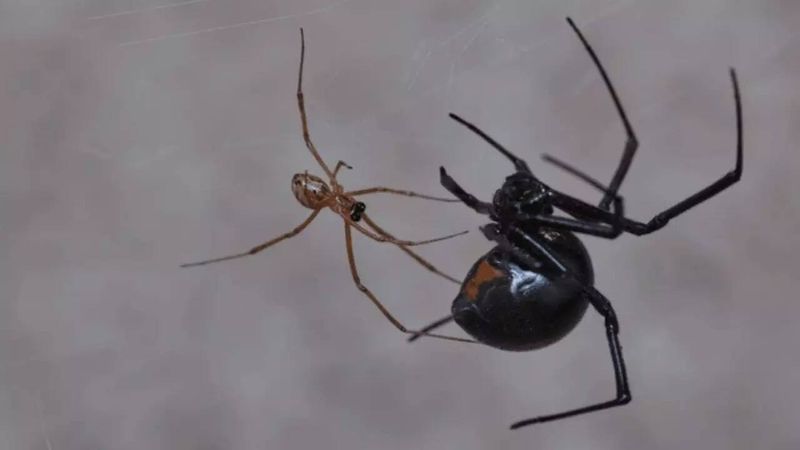
In the world of black widows, females reign supreme. They are significantly larger and more robust than their male counterparts, who often appear brown and inconspicuous.
This size discrepancy plays a role in their life cycle and mating rituals. Males, driven by instinct, approach females with caution, aware of the risks involved. The infamous post-mating behavior, where the female may consume the male, is a survival strategy, ensuring the strongest traits continue.
Such dynamics showcase the complex interplay of survival and reproduction in the animal kingdom.
The Misunderstood Cannibal
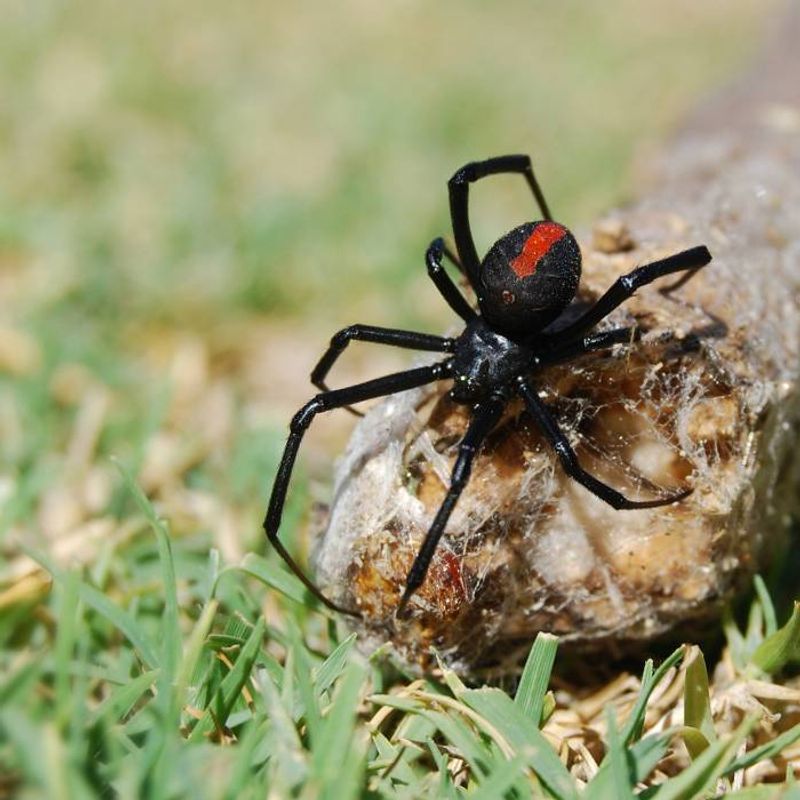
The black widow’s reputation for cannibalism is exaggerated yet rooted in truth. Not every mating results in the male’s demise. In fact, males often escape unscathed, having successfully passed on their genetic material.
This behavior, when it occurs, is driven by survival instincts, ensuring the female has adequate nutrition for egg development.
Cannibalistic tendencies are not unique to black widows but are observed across various species. This misunderstood aspect of their life highlights the often harsh realities of nature’s cycles.
The Elusive Male
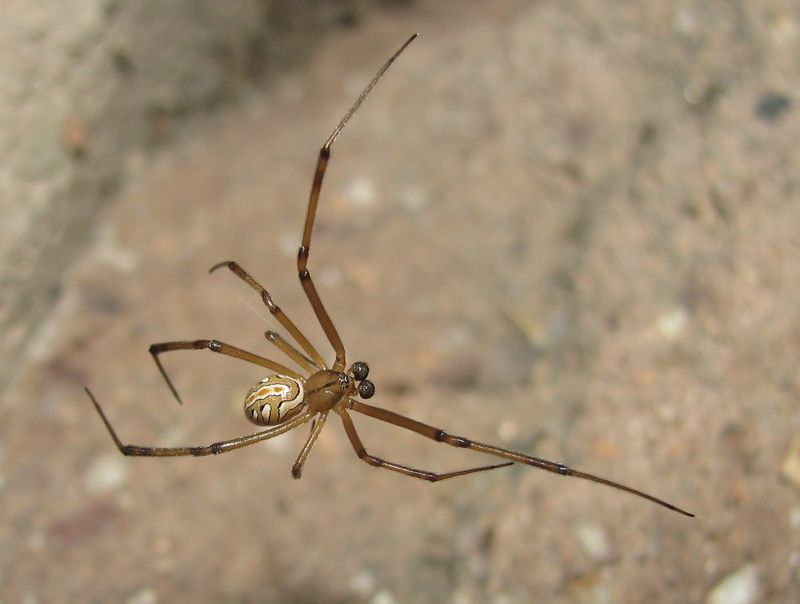
Male black widows are often overlooked, living in the shadows of their more notorious female counterparts. Smaller and less vibrant, they play a crucial role in the species’ continuation.
Their primary mission is finding a mate, a journey fraught with danger and competition. Despite their understated appearance, males possess keen survival instincts and remarkable adaptability.
Through their perilous quest, they contribute to the ongoing legacy of the black widow, embodying resilience and determination in the face of daunting odds.
Ecosystem Engineers

Black widows are more than just predators; they are integral components of their ecosystems. By controlling insect populations, they help maintain ecological balance.
Their presence signifies a healthy environment, as they thrive where biodiversity flourishes. While feared, their role as pest controllers is invaluable.
In understanding these spiders, we gain insight into the intricate web of life, where every creature, no matter how feared, plays a part in the greater ecological narrative.
The Art of Silk Production

Silk production is a marvel of black widow biology. Their silk, renowned for its strength and elasticity, serves multiple purposes, from creating webs to wrapping prey and constructing egg sacs.
This silk is a masterpiece of natural engineering, offering insights into material science and potential applications. As researchers study its properties, black widow silk could inspire innovations in various fields.
This aspect of their biology underscores the hidden marvels within these misunderstood creatures, blending art and science in their daily survival.
The Resilient Survivors
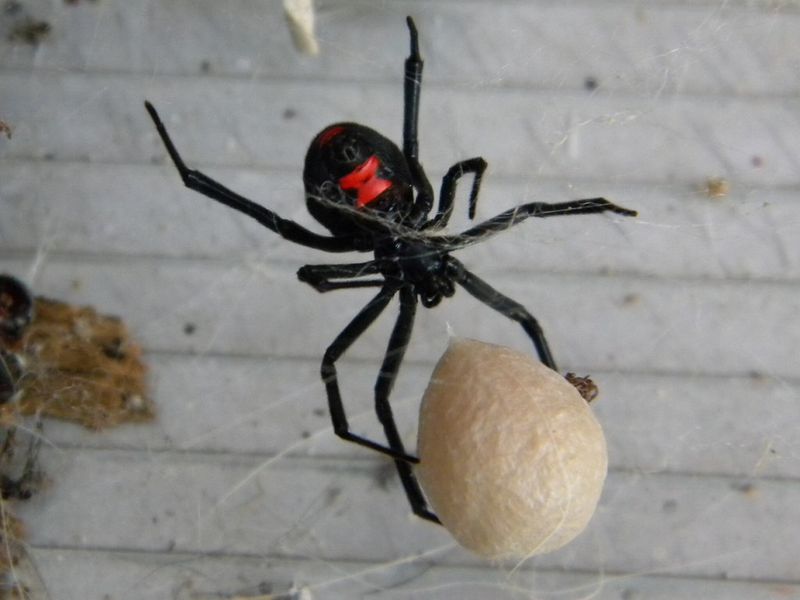
Black widows are quintessential survivors, thriving in diverse and often challenging environments. Their resilience is a testament to evolution’s power, enabling them to withstand predators, environmental changes, and human encroachment.
They remind us of nature’s ability to adapt and endure, even in the face of adversity. Their survival story is not just one of fear and danger, but of strength and perseverance.
Through understanding and respecting these spiders, we glimpse the broader narrative of life’s tenacity on Earth.

